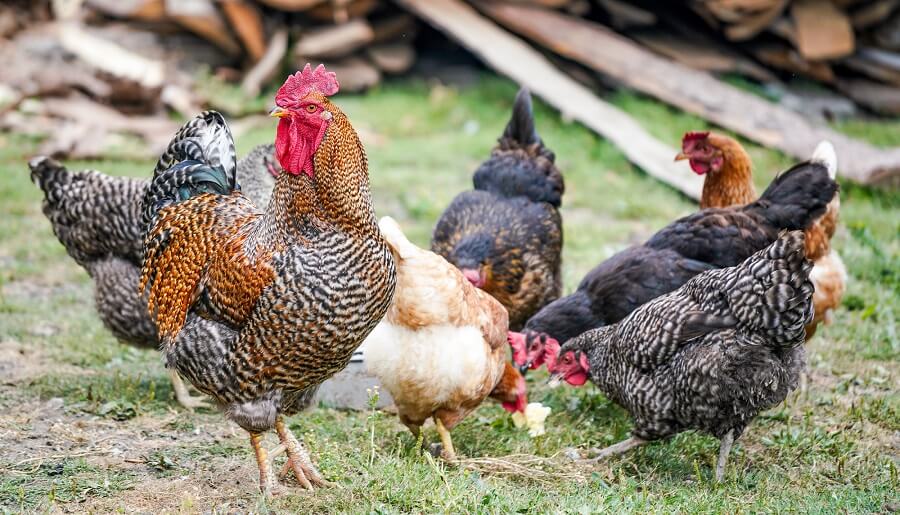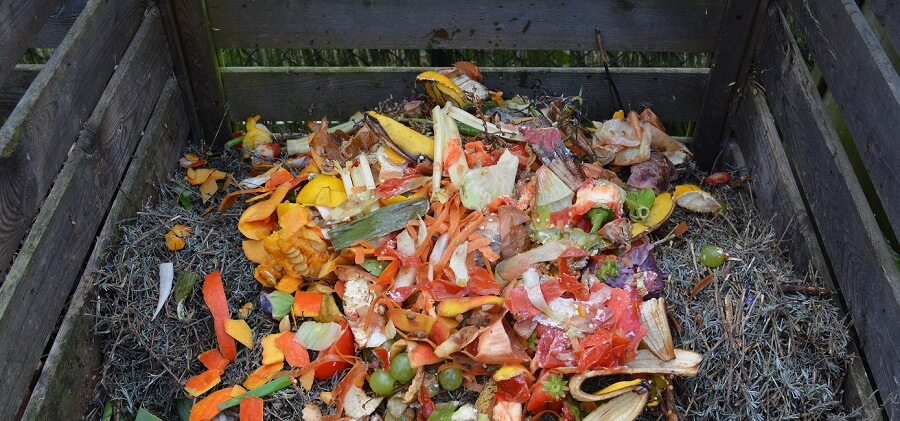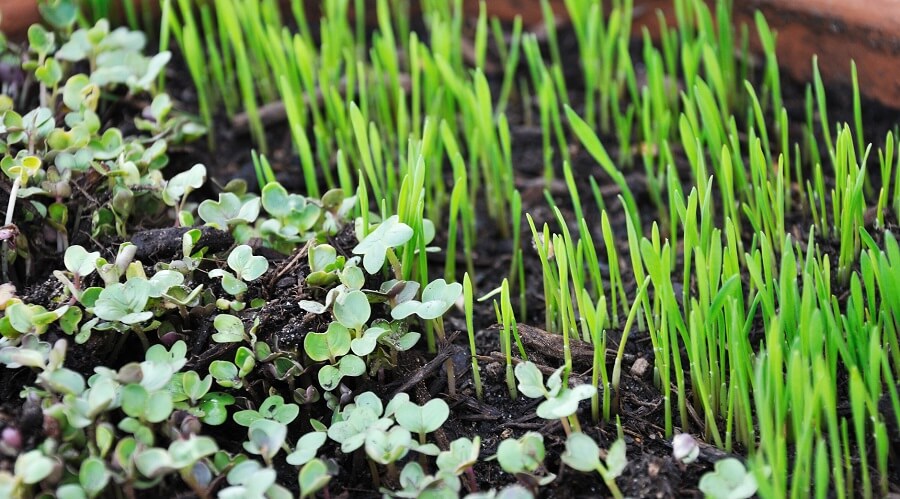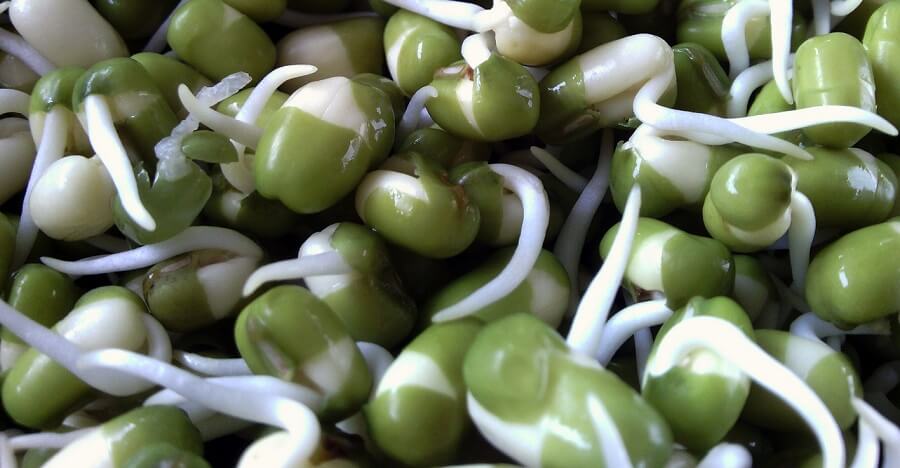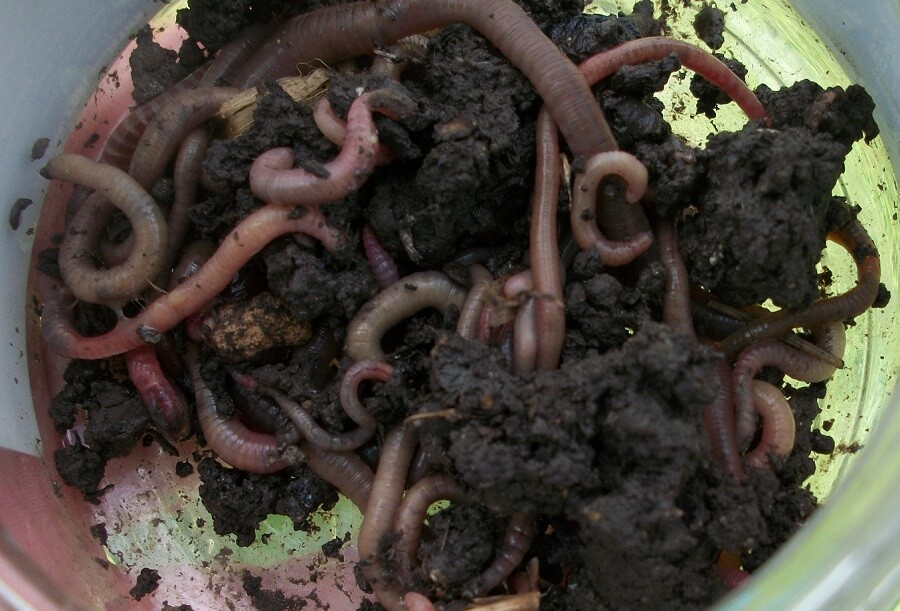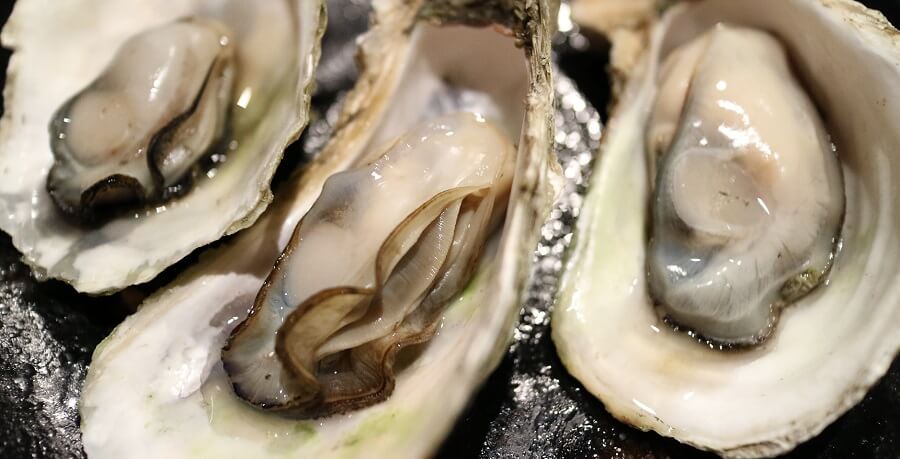It was only two months after binging home 15 adorable chicks and 4 ducks that I realized how much my birds ate. They had constant access to food, but my kids were filling up the containers 4-5 times a day. We ran through over $20 of food a week.
That doesn’t seem like much, but with 2-3 more months to go before they started laying eggs, I wondered if I’d eve break even on the cost of the eggs we were going to get. I wondered, what do chickens eat and how can I feed them healthily while making it a cost-friendly venture.
Happily, I found answers.
What can chickens eat? Chickens eat a wide variety of foods. They are omnivores so they eat bugs, vegetation, grains, and small animals. Chickens will often eat snakes, frogs, and mice, but will find they don’t like the flavor of frogs. They eat seeds, leaves, and flowers. Chickens eat dirt or grit, which helps them to digest their food as they don’t have teeth.
Laying chickens also eat calcium-rich foods and may even resort to eating eggs when their calcium intake is low.
In the winter, chickens need a commercial laying crumble and will also need fresh produce to stay healthy.
As chickens will eat a variety of foods, both commercial and free-range, let’s discuss ways you can feed your chickens for less of a cost. This article will also discuss the other factors of a chickens diet that you should be aware of to keep them healthy and strong during all the seasons.
How To Save On Chicken Feed
Feeding chickens can get pricey. That is especially true when it can take chickens 4-5 months before they start laying eggs. In my part of the world, 6 dozen large white eggs cost between $4-6, depending on the time of the year.
A bag of feed is between $17-20. A bag can last 1-2 weeks. So, it quickly becomes more expensive to raise chickens for the eggs than to just purchase them. Of course, home-grown eggs are more nutritious and the chickens happier so there are other considerations. Plus, chickens are great for kids.
Fortunately, there are several things you can do to reduce the cost of chickens.
In addition, chickens have special nutritional needs when they are laying eggs and when the weather turns cold. Meat chickens have their own set of food needs. This article with also cover those needs. You will also be able to check out a quick list of what table scraps you can feed your chickens and what foods are bad for chickens. Lastly, we will cover the signs that your chicken’s diet is nutritionally lacking.
Free Range Chicken Food And Diet
One of the best ways to reduce chicken feed expenses is to allow your chickens to free-range. As soon as the days are warm, even chicks can be allowed outside supervised or in a protected area.
Fully grown chickens do well outside all year round, even in cold weather. But, the spring through fall months will provide enough foraging opportunities for your chickens to forage for their diet.
Free-ranging will provide chickens with a varied and nutrient-rich diet. Chickens will be able to eat seeds, bugs, grubs, and vegetation. They will forage and find tasty morsels in the dirt.
Free-range chickens will lay eggs that have a deep yellow yolk. Their eggs will taste rich and flavorful.
But, even free-ranging chickens need water. It is vital that you make sure your chickens have plenty of access to clean water. Chickens can actually go a day without food but will die on a hot day without water.
Do Free-Range Chickens Need Feed To Supplement Their Diets?
Although chickens have been domesticated for centuries, it’s only been in recent decades that purchasing chicken feed has come into style. Your grandmother’s generation allowed their chickens to forage and tossed them occasional kitchen scraps and dried food.
But, since them, chickens have been bred to lay more eggs. Instead of laying about 100 eggs a year, today’s chickens can lay over 300 eggs a year. That means they need more food than their ancestors.
As a general rule, most chickens can forage for their food needs. But, some breeds don’t forage well, while city chickens don’t have enough space to forage. If you have limited space or vegetation for your chickens to forage in, you will need to supplement their diet.
How Much Space Do Chickens Need To Free Range?
The term free-range is a USDA term that means chickens have access to outside foraging at least a few minutes a day. But, a few minutes a day doesn’t allow chickens to get enough food.
Guidelines for chickens usually say that 10 square feet per bird are ideal for free-ranging chickens. This is a good guideline for city and suburban birds.
But, if you have more space, chickens will benefit from added variety and space. Plus, it helps with bullying issues.
If you are relying on free-ranging your chickens to offset food costs, then there are several things to chicken.
Chickens should have access to plenty of foliage and vegetation. A large dirt-covered run doesn’t provide nutritional needs or very much food at all to chickens. They should be able to find seeds, leaves, flowers, and other vegetation to feast on.
Chickens will scratch through the dirt and find small morsels that you can’t see. They help with weed control as they eat seeds and flowers of plants.
They also need plenty of insects, slugs, mice, or even lizards. Chickens need protein. They eat a lot of bugs. They will find them under bushes and trees, in the dirt and all over. Worms can be found in the ground and compost pile.
You can provide tasty treats for your chickens by placing a log on the ground. Your chickens will love to perch on it. But, if you rotate it or move it once a week, they will love all the worms and insects that will be found underneath.
Consider providing access to your compost pile or moving it close to their chicken run. Your chickens will churn and move the compost around, which will help it to compost faster. They will also find tons of yummy bugs and worms in it. Compost is a great way to attract those tasty treats to your chickens.
While overfeeding your chickens mealworms can cause kidney failure, insects that chickens work for are really good for them.

Free range chickens will have access to dirt. Dirt is an essential part of a chicken’s diet. When chickens are kept in a coop, grit is an essential supplement. But, when they free-range, you don’t need to provide grit. They will naturally pick it up while they forage in the dirt.
Dirt, sand, and grit help to grind the food in a chicken’s crop. It does what teeth do for us. It aids in digestion by breaking the food up.
But, even free-range chickens need constant access to water. Chickens will drink from pools of rainwater. In the hot summer months, it is especially important to have plenty of water available. Water allows chickens to regulate their body temperatures.
It keeps them from overheating. In the winter, water helps chickens to keep their body temperature higher and keeps them from freezing to death.
Make sure that your chickens have enough water. If you free range, as I do over several acres, them provide a couple of different watering options for them. Old swimming pools, large buckets, or cut-off barrels can provide easy water access.
Lastly, chickens need bushes and trees. Specifically, they need protection. When I initially got chickens, I wanted to make sure they were protected from the hawks that started coming by in the morning hours looking for a tasty meal.
I wanted to add fishing wire to the areas I planned to let them run loose but ran out of time. Instead, I discovered something amazing. The chickens are super intuitive. They run for cover when danger is near.
Despite a few restless nights of worry by my kiddos, no cat or hawk has managed to get them. They duck under the car, the bushes, or even my vinyl fence when needed. Providing your chickens with bushes and trees will allow them to protect themselves.
But, do be aware that some breeds such as Polish, Crevecoeur, and other breeds will have limited visibility and won’t be as good at hiding from predators.
Free range chickens should have access to several things:
- Foliage and vegetation
- Insects, slugs, and small animals
- Compost pile
- Dirt
- Water
- Bushes, trees, or protection
What Chicken Breeds Forage Well In A Free-Range Situation?
While many chicken breeds are very good foragers, others are not. Certain chicken breeds don’t do well free-ranging for food. These breeds will need supplemental feed even when foraging is available during all daylight hours.
The Chicken Breeds That Forage Very Well:
- Ancona
- Andalusians
- Aracona, Ameraucana, and Easter Eggers
- Austra White
- Australorp
- Black Star
- Buckeye
- Chantecler
- Dominique
- Dorking
- Empordanesa
- Egyptian Fayoumi
- Rangers
- Hamburg
- Langshan
- Lincolnshire Buff
- Leghorn
- Lohmann Brown
- Maran Chickens
- Minorca
- Modern and Old English Game
- New Hampshire
- Plymouth Rock
- Rhode Island Red
- Sussex
- Welsummer chickens
- Wyandotte
Chicken Breeds That Do NOT Forage Well (Need Supplement Feed When Free Ranging):
- Brahma
- Cochin
- Cornish Cross (meat chicken)
- Crevecoeur
- Faverolle
- Golden Comet
- Jersey Giant
- Onagadori
- Orpington (Lazy)
- Penedesenca chickens
- Phoenix
- Polish
- Silkie
- Sultan
- Totenko
What If I Can’t Free Range?
Now, just because a chicken doesn’t do as well free-ranging, doesn’t mean that free-ranging doesn’t benefit your chickens. All chickens are healthier in an environment where they are free to find food and work for it.
Some chickens don’t free range well because they can’t see and are very predator prone. Others are simply too lazy or eat too much to be able to forage for enough food. Be sure to click on the breeds you have to make sure you are providing the specific needs of your chickens.
Use Table Scraps To Supplement Chicken Food
Help reduce waste and feed your chickens by giving them your table scraps. Chickens can eat most foods that people can, but there are a few things to watch out for. Because they have smaller bodies, foods that are bad for people are especially bad for chickens.
Be careful of the salt content in food, especially processed foods. Be cautious about non-whole grains such as processed white flour. Oil is also bad for chickens.
But, chickens can eat most fruits and vegetables. They can eat cooked meat scraps. They can also eat leftovers such as spaghetti (especially whole wheat), soups and other things.
One vegetable that chickens won’t eat is avocados. Avocados are actually poisonous to chickens. Do not feed them to your chickens.
Other vegetables aren’t poisonous, but your chickens won’t eat them. Those foods include citrus fruits.

Avoid Giving Chickens These Human Foods:
- High Sugar Foods: muffins, cookies, cakes
- Processed Foods: store-bought bread, pizza, salami
- Salty Foods: chips, restaurant french fries, processed cheese
- Alcohol
- Chocolate
- Black Tea Bags: Tanis levels are very bad for chickens
- Moldy Food: several types of mold can kill chickens
- Uncooked Beans: Contain hemagglutinin which is bad for chickens
Use A Compost To Feed Chickens
Chickens don’t just love table scraps, they love a compost pile. Chickens love piles of any kind. They love to dig and scratch through it. They love finding bugs and worms that are breaking down the waste.
Compost is a great place to put the bad food, overripe vegetables, and grass clippings. Your chickens will eat the foods that are appealing, but the rest will break down into healthy soil and nurture good bacteria.
Plus, chickens are good for your compost too. Their activity churns and moves it around, making the decay more effective.
Use Garden Waste To Feed Chickens
Whether or not you have a garden, you can use garden waste to feed chickens. The outside leaves of lettuce, the ends of carrots, overripe zucchini. Throw it all to your chickens.
If you don’t have a garden and truly don’t know anyone with extra over-ripe produce they want to toss, then check your local farmers market or grocery stores.
Most stores toss undesirable produce that is wilted, dry, or just doesn’t look as nice. Your farmers market may put you in contact with local gardeners who may be willing to sell or give you some of their extra waste.
If you do have a garden, then chickens and garden extras have a great symbiotic relationship.
After you are finished harvesting for the year, let your chickens out to feast in your garden.
They will eat the bugs and slugs, clean off the plants, and help your garden be ready for the next spring. My chickens think it’s the best time of the year!
Use Fodder To Unlock Extra Nutrients
Fodder is when you sprout grains to feed to your animals. Chickens love grains. They eat grains and seeds. Really grains are just another type of seed.
But, uncooked grains can get caught in your chickens’ crop. When they have to work for their grains or seeds to eat, they pick up dirt, which helps to break it up. When you feed them grains solo, they get a stuck crop, which can kill them
So, soaking that grain and allowing it to sprout make grains a great food that won’t harm them. Plus, it adds so much more nutrients to the food than just feeding the grain to your chickens.
Making fodder is easy to do.
First, soak your grains for a day.
Next, drain them, but keep them moist.
Allow 3-4 days for the grains to sprout. Once they have sprouted and grown to the desired size, feed your chickens.
They will feast and get the extra vitamins that sprouts unlock.
Let Chickens Clean Up Nut And Fruit Trees
Rotten, old, or bird-pecked fruit will be treasured by your chickens. Nuts provide high protein to your chickens. In their shells, nuts aren’t very consumable to chickens.
Grind up excess nuts for your chickens.
Or, leave the extra nuts on the ground. As the next year rolls around and the shells crack open, your chickens will naturally feast. You can also mow any lawn under the trees and let your mower do the cracking.
Several popular nut trees produce nuts that are great for chickens.
- Beeches
- Hickory
- Oaks
- Pecans
- Walnuts
Fruit can include not only fruit trees but also bushes such as raspberry, mulberry, juneberry and any other type of berries.
Fresh Grass Is Good For Chickens
Fresh grass can make up as much as 20% of a chicken’s diet. It shouldn’t make up the entire diet, but chickens do love a good grass pile. If you let your chickens free-range, they will have access to fresh grass.
But, if you live in a city or have them cooped up, then tossing your cut grass will give them entertainment and a snack.
Don’t feed your chickens treated grass. Pesticides and other poisons can harm your chickens and may kill them. At best, it will still pass the poisons into the eggs.
Make Use Of A Pond
A pond will be useful if you have chickens and ducks. But, even with only chickens, a pond can provide plenty of food for your girls.
Grow duckweed in your pond. Once it’s dried, it’s full of 40% protein. You can also grow fish for yourself and feed the scraps to your chickens. That includes the bones!
Or, you can raise fish specifically for your chickens. Pond fish that’s easy to raise includes:
- Bass
- Bluegill
- Catfish
- Carp
If you live in farm country and have ditches, you can make use of the ditches by collecting the dead fish at the end of the summer.
When the canals and ditches in our area drain, there are hundreds of pools that are filled with small fish.
These fish are fantastic for your garden and favored as food for your chickens. Fish are high in nutrients and omegas.
You can use the little sucker fish in many ways. Throw it on your compost. Feed them directly to your chickens. Throw one in a hole when you plant your new plants. You’ll have to freeze them over winter for that. Or, use them for maggot breeding grounds.
Soldier Flies: Use Animal Carcasses As Maggot Breeding Grounds
It sounds gross, but even animal bones, fat, and undesirable carcasses that aren’t safe for chickens can provide free food.
First, drill many holes around the bottom 6 inches of a 5-gallon bucket. Drill the holes in the bottom of the bucket.
Next, hang the bucket outside a few feet off the ground. Throw an animal carcass in. Then, let nature do her thing.
Nearly everywhere on earth, Soldier flies survive from the tundra to the desert. The flies will be attracted to the carcass and will eat it. They will lay their eggs in the rotting flesh.
The maggots will hatch and will crawl out looking for food. They fall through the holes and your chickens find and eat them.
The bucket will become a favorite place for your chickens to hang out!
Farm Mealworms As A Free Snack
Mealworms are fairly easy to grow. You can purchase live ones on Amazon. All you need to grow them is a couple of containers, some shredded paper, and some old fruit and flour.
Mealworms have three stages of life that are important. They have the larvae or worm stage. The pupa stage, or cocoon stage. And the beetle stage.
The flour will feed the mealworms. Apples or other fruit provide moisture for them. And shredded paper gives a dark environment.
As the worms hatch, use some of them to feed your chickens and allow others to turn into a pupa and develop into beetles.
Chickens love mealworms and growing them yourself make it easy and cheap to give your birds a treat!
Water Is More Important Than Food
Chickens can actually go a day without food and won’t suffer adverse health issues. But, chickens cannot go a day without water.
Water allows your chickens to regulate their body temperature and provides them with the functions needed to lay eggs.
In the summer, water is the difference between health and death for your chickens. In the winter, it prevents freezing to death.
Chickens absolutely must have constant access to fresh water throughout the day.
But, they can go without water during nighttime hours when they are perching and sleeping. Take the steps needed to provide them with continuous water all year around.
Chicken Nutritional Needs In The Winter
When the weather turns cold, chickens also need additional calories to keep warm. Colder weather often makes it harder for chickens to forage for food and bugs go into diapause in the winter. Diapause is similar to hibernation for insects.
With the bugs bedding down for the winter and the ground freezing, it is very hard to find food. Plus, chickens burn a lot more calories to keep warm.
This means that you should increase your chickens’ diet in the winter. While corn and other cracked grains aren’t really a great idea for them in the summer, winter is a great time to feed them grains.
Make sure they are cracked, soaked, or prepared in some manner so they don’t cause crop issues. The extra calories in the corn will give your chickens energy. Corn doesn’t have a high nutritional value so you will also want to feed them a layered mix and some fresh produce.
Check out this article for other ideas on food and fun you can give your chickens during the winter months.
Grit Becomes A Vital Need During Cold Months
Chickens need dirt, little pebbles, and sand to help them “chew” their food. They don’t have teeth and the roughness of tiny rocks help to grind their food for them. During the summer, chickens that free-range have plenty of access to the rocks and pebble they need.
But, r during the winter, the ground freezes and snow often covers the ground. This limits their ability to scratch and get the grit they need.
As a result, you should provide grit to them on demand. It will help them avoid crop issues and help them to get the most out of the food they eat.
Laying Hens Need Calcium
Hens must have access to calcium to keep their eggs strong and healthy. It takes a lot of calcium to make an egg and calcium isn’t always found in a free-range scenario.
The easiest way to provide calcium to your chickens is through a calcium substitute such as oyster shells.
You can also grind up the eggs from your chickens and feed them back to your hens. Chickens can eat yogurt, milk, sour milk, and limited quantities of cheese. That’s due to the fat and salt that’s usually put into cheeses.
There are other calcium-rich foods you can feed your chickens to help keep their calcium high:
- Eggshells
- Fish: including the bones, sardines
- Seeds
- Yogurt: in limited quantities
- Cooked beans and lentils
- Almonds
- Whey protein
- Leafy greens: spinach, kale, collard greens
- Rhubarb
- Figs
Guide To What Foods Are Prohibited As Chicken Food:
- Acorns: Tanis is lethal.
- Avocado: Lethal
- Raw beans: No, but cooked is ok
- Butter: High fat
- Cherry Pits
- Chocolate
- Citrus: not lethal, but chickens won’t usually eat it
- Coffee Grounds: Tanis is lethal
- Dates: Can taint the egg taste
- Eggplant
- French Fries: High salt and fat content
- Garlic: can taint the egg taste
- Raw Lentils
- Moldy bread: No, some molds are deadly
- Onions: can taint the egg taste
- Peanuts
- Pickles: too high in salt
- Green Potatoes
- Processed foods
- Salty foods
- Sugary foods
Table Scraps Chickens Can Eat:
Chickens will eat most things off your table. They will love the skins of vegetables and fruits, leftover yogurt, oatmeal, and bread. There are a few things to keep in mind. Make sure that any nuts, eggshells, and other large hard food items are chopped or crushed. Avoid food that’s moldy, salty, or high in fat.
Otherwise, most foods that aren’t on the prohibited list will be good for chickens. Treats and high protein food should be given as treats and not as the main part of a flocks diet. This includes mealworms, sunflower seeds and other goodies, which can cause kidney failure.
Other foods such as oatmeal, yogurt, and corn should be given more in the colder months than in the summer.
- Chopped Nuts: almonds, cashews, chia seeds, coconut, pecans, popcorn: seeds, unpopped, and popped, sunflower seeds, walnuts
- Fruit: apples, bananas, berries, cantaloupe, cherries, grapes, kiwi, mango, melon, peaches, pears, plums, pomegranate and seeds, raisins, grapes, raspberries, strawberries, watermelon,
- Citrus fruits: some chickens will eat it, but most won’t. Not harmful.
- Vegetables: asparagus, beets, peppers, broccoli, cauliflower, celery, corn, corn husk, cucumbers, eggplant, green beans, tomatoes, green tomatoes, peas, pumpkin, radishes: everything, squash, sweet potatoes, tomatoes, zucchini
- Legumes: cooked beans, bean sprouts, peanut butter, peanut shells,
- Greens: arugula, Brussel sprouts, cabbage, kale, lettuce, spinach,
- Root veggies: potatoes (no green), cooked potatoes, carrots, ginger, green onions,
- Grains: bread, brown rice, oatmeal: cooked or dry, cooked rice, pasta, quinoa, wheat,
- Milk products: cheese in limited quantities, yogurt, sour milk
- Meat: cooked chicken, cooked eggs, fish, ham, shrimp,
- Insects: crickets, earthworms, mealworms,
- Flowers and grass
- Spices: cinnamon,
- Pet food: Cat food, dog food, goat feed, rabbit food, birdseed
How to Tell If you Chickens Aren’t Eating Right
If you are worried about your chickens eating, there are a few signs of poor nutrition that you should watch for.
Wry Neck: Chickens, or ducks, that can’t hold their neck up have a wry neck. Wryneck is most often caused by a Vitamin E deficiency. Chickens with wry neck will eventually struggle to eat, will walk backward, and will struggle with other body movements. It can become deadly.
The best way to treat wry neck is to treat with Vitamin E. When I had a chick with a wry neck, I fed it part of a Vitamin E capsule and mealworms for a week. Within 2 days, the chick was improving and within a week, it was completely back to normal.
I’m not sure what caused the deficiency as it was being fed chick grower formula, but the extra vitamin E fixed it. I fed the mealworms as a high-protein and high-calorie diet because chicks and chickens with wry neck don’t usually get enough to eat. I didn’t want it to starve to death while it was still healing.
Egg Production decreases without a seasonal change: Chickens will molt and that affects egg laying. Fall and decreased daylight hours also affect egg products. But, if there haven’t been a seasonal change and egg production drops, diet is usually the first problem.
Hens may not be getting enough to eat or enough of certain vitamins or minerals. Make sure that your girls have plenty of vegetation, water, and calcium. Try to identify nutritional deficiencies and correct them.
Feather picking and other unrest: A food shortage can cause bullying and unrest in your flock. But, boredom can also cause unrest. If the unrest occurs during the winter, make sure your flock isn’t bored by offering some extra fun. Especially birds feel cooped up in the winter.
Make sure you are offering enough food and that your feeding locations are in various locations. This allows bullied chickens to still get enough food when other hens are guarding the food. Offer enough treats for all of your flock to enjoy some.
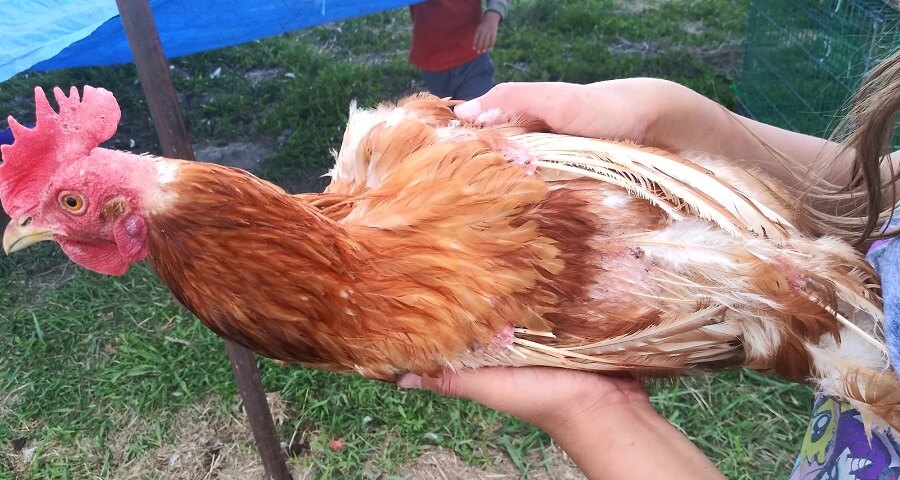
Abnormal Eggs: Double Yolks, Small: If your eggs change and become double yolked or smaller, then check your birds’ food. Double yolks are usually only laid by newer pullets that have just started laying eggs. After that, most hens don’t lay double yolks. It can also be hereditary. If an older hen lays double yolks, it can signal a hormonal imbalance.
Rough eggshells: Bumpy eggshells are caused by uneven calcium across the shell. It is usually caused by too little water. In the summer, if the water runs dry, it becomes a problem. Or, if the water freezes during the winter, a hen may lay a rough egg. It can also be caused by a sudden lighting change. If you change the flocks lighting, do it gradually.
It can be a virus caused. It is rarer, but infected bronchitis, largno, or tracheitis can cause bumpy shells.
No shells, or soft shells: When an egg is laid with only the shell membrane or a soft shell, it is an indicator of several things. Younger hens can often lay them. Hot days often cause hens to eat less calcium. Make sure your hens have access to calcium all day.
Obesity can cause this. Try to encourage your flock to free-range more and consider limiting the feed to an on-off schedule. 12 hours on and 12 hours off will work. You can also feed them in the morning and evenings and allow the flock to free-range the rest of the time.
There are other causes that can’t be cured. Hormonal problems, old age, and infection can cause issues. Genetic issues such as calcium absorption issues have no cure.
Related Questions
Will My Chickens Overeat?
Chickens are very good at knowing how much food they need. Egg and dual-purpose chickens won’t overeat. If you offer pellets or crumble on demand, then your chickens will eat as they need and not more.
There is one exception: meat chickens. Today’s hybrid meat chickens are bred to fatten unnaturally quick. Cornish Cross and other fast-growing chickens can and will overeat. Meat chickens should be fed on a 12-hour on and off schedule. The feed is offered 12 hours on and then taken away for 12 hours. See our guide on chicken breeds
Do Ducks And Chickens Eat The Same Things?
Ducks and chickens eat many of the same foods. Ducks should never be fed medicated chicken feed. Ducks eat a lot more food than chickens and will overdose on the medicine found in the feed.
Ducks need water near their food source or they risk clogging their nostril membranes and suffocating. They will also avoid some foods that chickens will eat. Generally speaking, ducks that have foraging abilities, or on-demand food, will avoid the foods that aren’t good for them.
The one exception is high sugar, high salt, and high fat, or processed foods. Just like people, ducks can become spoiled and lazy going for the tasty, but nutritionally deficient foods.
My Favorite Chicken and Duck Supplies
This list contains affiliate products. Affiliate products do not cost more but helps to support BestFarmAnimals and our goal to provide farm animal owners with accurate and helpful information.
Manna Pro Oyster Shell keeps eggs strong. Before I gave my chickens oyster shell, I had the oddest eggs, many with weak and irregular shells. Now, I don’t have an issue.
Layer Feed by Manna Pro. I like pellets rather than crumbles as my chickens eat them better and less gets wasted or scavenged by rodents. A good layer feed makes the difference in hens laying many more eggs.
My chickens love this mealworm treat, which gives added protein, something that’s great during molting and winter months.
There are many ways to feed and water your chickens. I like this food and water setup the best because it reduces waste, saves me time feeding and watering, and keeps the food fresh longer. Except, in the winter, I use a heated waterer. The only problem is the heated waterers need to be replaced every few years.
I love this chicken veggie hanger. It makes it easy to give your chickens produce from the garden and keep them occupied in the winter with a fresh head of lettuce.
These chicken toys are a hoot! They will help curb bullying and keep your chickens active, especially in the winter when hens tend to get more lethargic.

